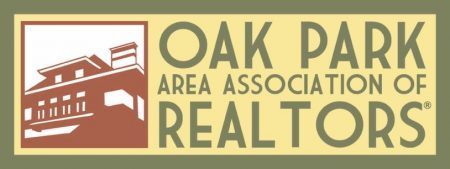Location: River Forest is located approximately nine miles west of downtown Chicago. Click here for map.
History: River Forest’s earliest settlers can be traced to the Menominee, Chippewa and the Potawatomi Indians who settled along the Des Plaines River.
In 1831, Bickerdike and Noble, a Chicago firm, built a sawmill just north of Lake Street on the east bank of the Des Plaines River. The mill, reportedly the only one within 20 miles of Chicago, was vital to the growth and settlement of the River Forest community. In its earlier days, River Forest profited from its proximity to Chicago. Settlers were attracted by the fertile land, forest and river, which bordered on the west. Most settlers were after grazing and farming land and only used the forest for wood supplies.
The arrival of the railroad in 1865 was probably the single most important factor in the development of the community. River Forest became known as “the village of churches and schools.” The first district school was built in 1850.
Incorporated in 1880, River Forest continues to prosper and is one of the most affluent suburbs in Cook County.
Architecture: River Forest is home to approximately 12,000 people and like its eastern neighbor, Oak Park, boasts a rich architectural heritage and citizenry that appreciates the preservation of that heritage. Most of the community land is covered by residential buildings, churches and educational institutions. The housing stock in River Forest is varied, including condominiums, starter homes, mid-sized homes and large mansions.
Government: The government consists of a Village administrator, an elected president and six Village trustees. Click here for Village Web site.
Education: River Forest School District 90 has two elementary schools and one middle school (grades 5-8).
Students from River Forest attend Oak Park and River Forest High School. River Forest also has six Catholic schools and one Catholic high school, and two universities, Concordia and Dominican.
Transportation: River Forest has easy access to the expressway (I-290), Metra, PACE, and the CTA.
Arts and Culture: River Forest shares a thriving performing, visual, craft and literary art scene with the neighboring Village of Oak Park. From the Harrison Art District, the many galleries on Lake and Marion Streets and the variety of musical performance venues, to the innumerable artists, artisans, graphic artists, musicians, writers and indigenous theatre groups, the Village of Oak Park is the hub for a lively arts community often supported by the Oak Park Area Arts Council.
Points of Interest: A visit to the Trailside Museum will put you in touch with nature in the beautiful wooded setting along the Des Plaines River. Add a stop at the River Forest Town Center, which boasts more than 80,000 square feet of retail shops and wind up with a tour of Whole Foods Market, a beautiful European style market.
If you’re looking for a cost-effective meeting site, consider Concordia University and the Dominican University and Conference Center located in River Forest.
Library: The River Forest Library’s friendly staff are at your service. Your library card gives you access to thousands of books, periodicals, tapes, and videos as well as computer databases and the Internet.
Park District: To enrich the community through acquisition, development, management, and preservation of parks and open space, while providing fun, meaningful, and safe recreation opportunities for the residents of River Forest. River Forest Park District
Shopping: River Forest has a small town feel but is still close to shopping, both in town and in the nearby Village of Oak Park and at the Oak Brook Shopping Mall in the nearby Village of Oak Brook, known for its outstanding mix of retailers and its beautiful outdoor ambiance.
Local newspapers: Pioneer Press’ River Forest Forest Leaves and The Wednesday Journal.

